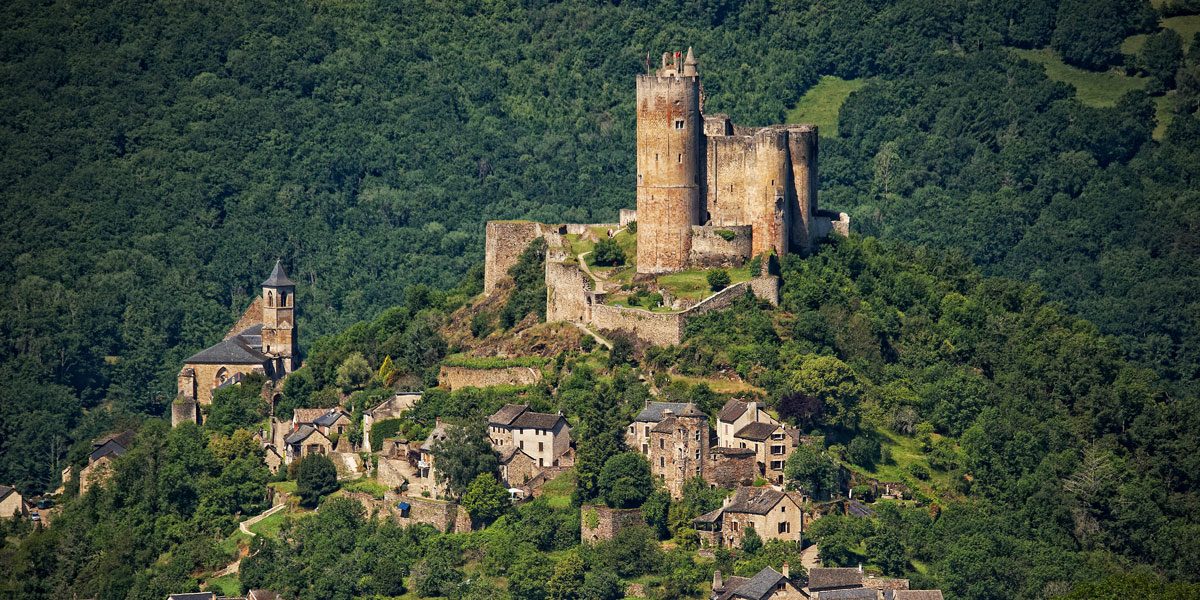Hear about the history and heritage of the town of Najac, a medieval town perched above the Aveyron gorges.
The history of Najac is linked to the major events in the history of France: the Crusade against the Albigensians, the 100 years war, the wars of religion, the revolt of the Croquants...
Najac, the sentinel
Taking its name from a Gallo-Roman domain, Najac developed in the XNUMXth century under the protective wing of a fortified castle.
In the middle of the XNUMXth century, following the crusade against the Albigenses, and while the lands of the South of France were covered with Bastides, the town of Najac, whose location is strategic, was redeveloped by the Count of Toulouse Alphonse de Poitiers, brother of King Saint Louis. Najac then became a city of power, seat of the seneschalsy of Rouergue... Considerable work was carried out there in order to establish royal authority and develop exchanges: the fortified castle was rebuilt, a new and vast church was built, and a new district is laid out around the place du Barry in order to accommodate markets.
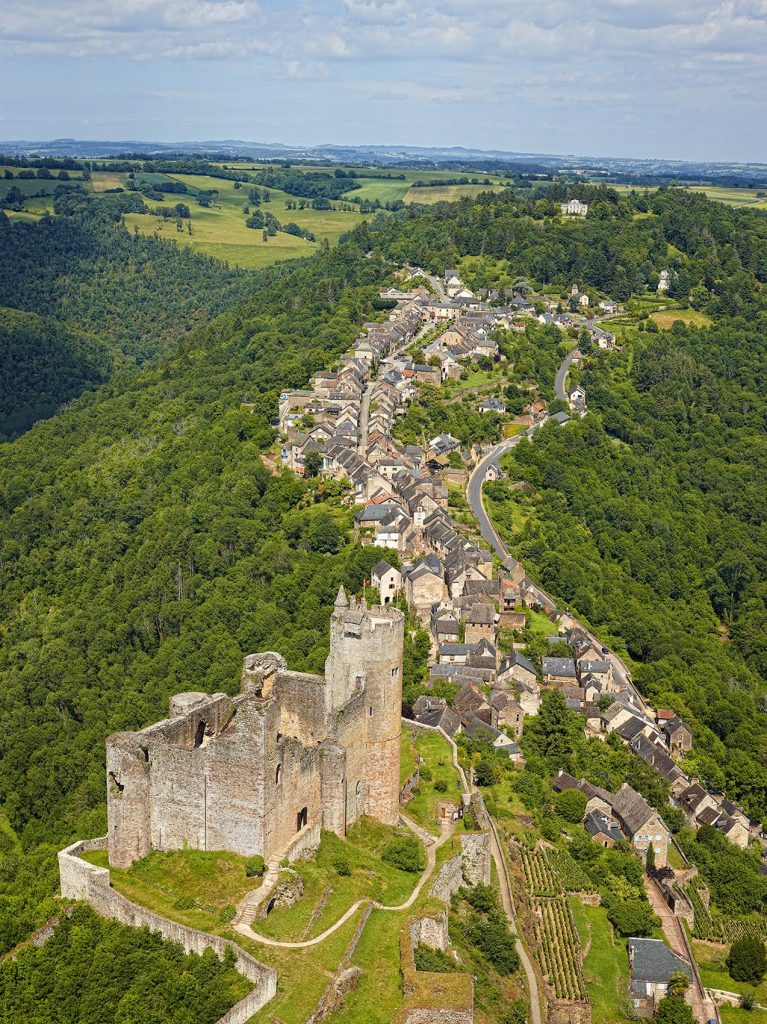
- In 1271: Najac and the county of Toulouse are attached to the Crown. The city knows then and during all the Middle Ages an economic ease. Pilgrims flock there…
- In 1348: the Black Death decimates the population of Najac and considerably slows down the economy in the Rouergue. Between 1362 and 1368, and in accordance with the Treaty of Brétigny, the town was occupied by the English royal army, until the population massacred the garrison stationed in the castle.
- In 1589: the Huguenots occupy Najac and engage in looting. Driven by hunger, they are finally driven out of the castle by the population.
- In 1643: the revolt of the Croquants breaks out. These poor and starving peasants occupied Najac and Villefranche-de-Rouergue. They are arrested, then condemned to death for the example.
- During the Revolution: the castle is delivered to the pillage. The monument is fortunately saved from destruction. In the middle of the XNUMXth century, the railway line was built, a section of which passed under the village. The phylloxera which ruined the wine-growing economy, the First World War, then the rural exodus singularly modify the artisanal and agricultural practices.
Let yourself be told the story of Najac…
Najac occupies a steep massif where schist and gneiss impose surprising tones on the landscape. The plant cover of the gorges, in which hemp and flax were once grown, is abundant. It differs from that of the hills on which conifers have gradually supplanted the vines and orchards, as well as the oak and chestnut forests in which the herds grazed.
The village, which is organized on either side of a long main street linking the Pause district to the Place du Barry, stretches from east to west along a narrow rocky ridge at the bottom of which winds a meander of the Aveyron. Like a sentinel, Najac watches over the river, which two bridges dating from medieval times allow to cross, and a valley made up of woods and pastures.
This village-street of exceptional length, whose fortified castle occupies the highest point of the promontory, and which knew how to colonize the steep slopes of the rock, is bordered by a multitude of terraces on the site of which once stood dwellings and vines.
The unmissable places of the village
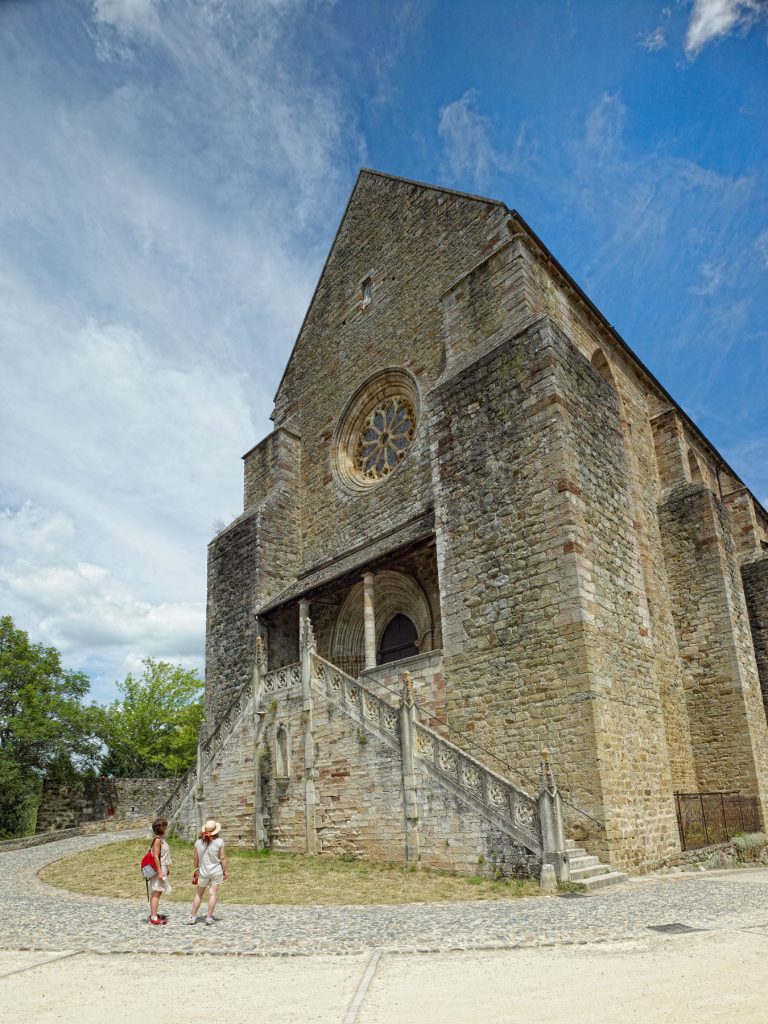
The Church of Saint John the Evangelist (XNUMXth century)
The Church, which adopts the Languedoc gothic style, and whose proportions are monumental, was raised at the request of the Dominican inquisitors thanks to the participation of the inhabitants, several of whom, suspected of heresy, were condemned to pay a heavy fine to redeem their faults.
The architecture eminently sober of this vast stone chest, buttressed by huge buttresses, is lit by windows made of openwork slabs.
The single nave, wide and high, was suitable for preaching, public meetings and the reception of pilgrims who could contemplate relics there. The latter received hospitality in the Saint Jacques inn, located opposite the church.
The Governor's house (XNUMXth, XNUMXth and XNUMXth centuries)
Former residence assigned to the royal administration, then property of various noble families engaged in trade during the end of the Middle Ages, the building retains important architectural remains (shop arch, windows, cupboards, latrine conduit) dating from the XNUMXth century. , XIVth and XVth centuries.
The building currently houses the Interpretation Center for the architecture and heritage of the Bastides du Rouergue. Open to visit.
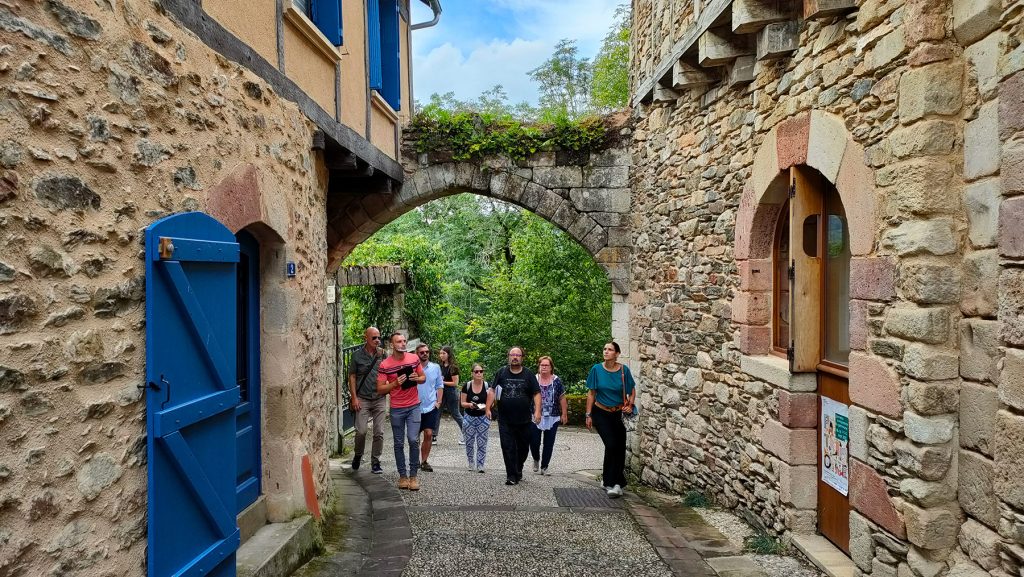
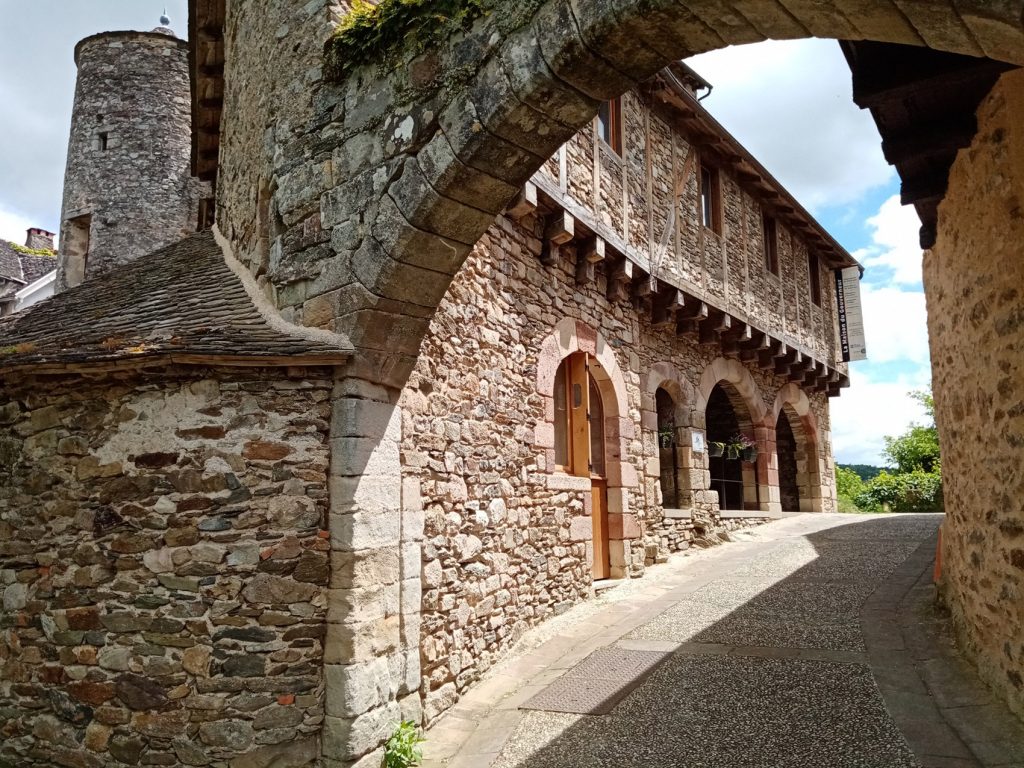
The Gate of the Pike (XNUMXth century)
This defensive work, contemporary with the fortified castle built by Alphonse de Poitiers, was initially part of the enclosure that surrounded the town until the XNUMXth century. The door, covered by a semi-circular arch, was surmounted by an upper chamber intended to defend access, and defended by a stunner allowing the pounding of possible assailants.
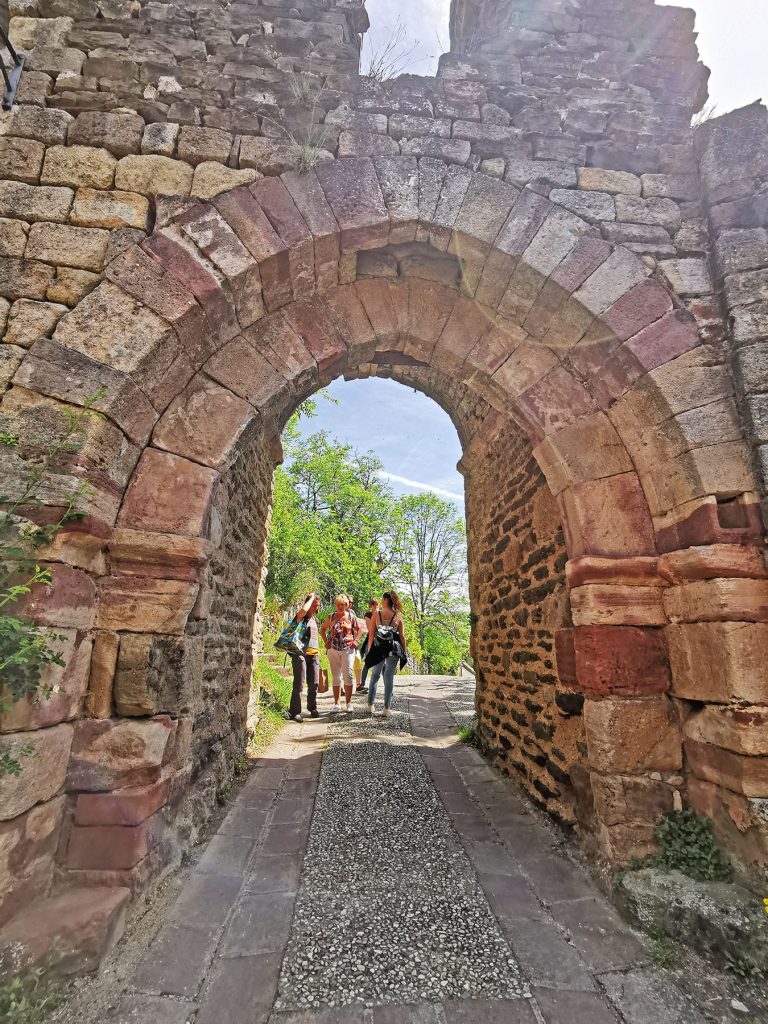
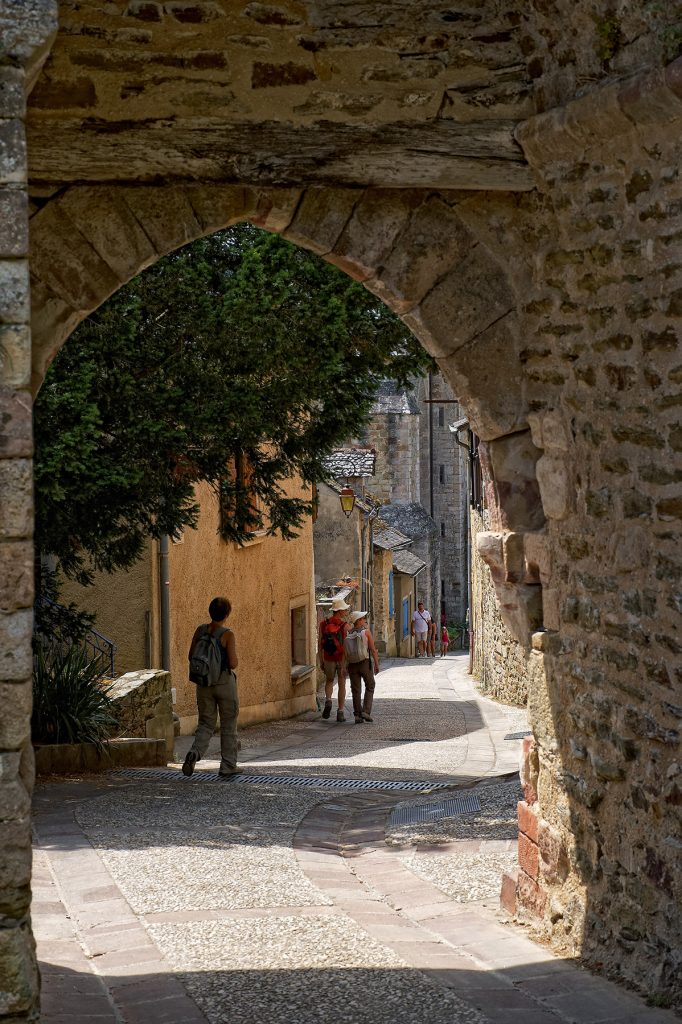
And other heritage nuggets...
Place du Faubourg
Developed to develop markets, the square, long and narrow, is bordered by two rows of houses which formed a linear housing estate. To the south, the stone or half-timbered houses of the 1th and XNUMXth centuries, lined up, are extended by covers under which were sheltered the goods for sale. A bleeding corresponding to half a cane (approximately XNUMX m.) dug into a pillar recalls the need for consular officials to calibrate the pieces of woolen, linen or hemp sheets sold by foreign merchants to Najac measurements. .
The Fountain of the Consuls (1344)
This public fountain dug in a monumental block of granite, occupies the central part of the village. A dedication in Latin recalls the date of its construction and the names of the consuls who were its sponsors. The arms of Najac (a fortified castle), a blessing bishop (the bishop of Rodez Gilbert de Cantobre), a king with a beard, and characters with enigmatic figures adorn the decagonal basin.
The Saint-Barthélémy chapel (XNUMXth century)
This chapel, which retains most of its architectural layout, and of which the entrance gate remains, was once associated with a hospital and a cemetery. It came under the Dômerie d'Aubrac. Confiscated as national property and sold during the Revolution, it was transformed into a dwelling house.
The house of the Seneschal (XNUMXth and XNUMXth centuries)
Built at the bottom of the fortified castle, this residence from the end of the Middle Ages, which retains mullioned windows, a watchtower and fragments of a wall painting, is said to have been the residence of the seneschal of Rouergue, at the time when Najac – then populated by about 3000 souls – was the administrative and judicial capital of the province of Rouergue.
The Saint Blaise bridge (XNUMXth century)
Built along the original road that led to Villefranche-de-Rouergue, this bridge on the back of a donkey allowed merchants, as well as pilgrims heading for Compostela, to cross the Aveyron in all seasons. The local lords, then the consuls who acted on behalf of the King of France, held a toll there, collecting significant taxes (tonlieu) on people and goods.


